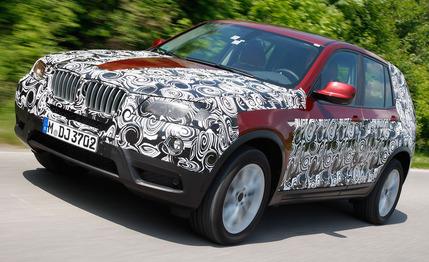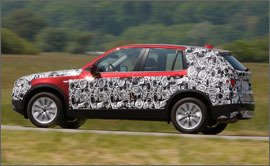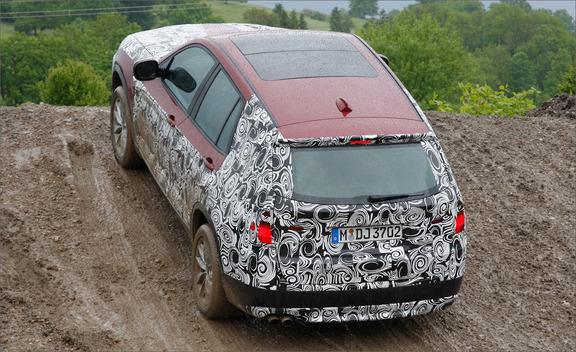 Prototype Drive
Prototype Drive
The main criticisms of the first-generation BMW X3 were that the suspension was too stiff and the ride was crude, especially for back-seat occupants. As if those weren’t enough, the interior quality was decidedly low-rent for a BMW. Despite improvements made during a mid-cycle refresh, the X3 remains the least impressive vehicle in the X-model lineup. According to Heinz Krusche, BMW’s head of chassis development, making it ride better and addressing the quality were the targets for the completely new X3, due in 2011. To check how seriously BMW did its homework, we met up with Krusche to drive a late-preproduction car.
To introduce more comfort without losing the X3’s sportiness, BMW is putting plenty of X5 features into its new small SUV. And thanks to a redesigned front end, the X3 looks even more like a baby X5 than it did before. BMW’s signature kidney-bean grille ports are now larger and higher for pedestrian protection, and the lights and the bumpers bear a strong resemblance to the X5’s. But the X3 has also grown closer in physical size. It is about three inches longer than the outgoing vehicle and about an inch wider. A slightly longer wheelbase and a track widened by about 3.5 inches promise better dynamic stability. BMW says the base model is about 50 pounds lighter than the outgoing X3, mainly due to the extensive use of aluminum parts. As a result, it promises about 10-percent-better gas mileage.

Inside, it’s a similar story. The front seats are now farther apart to free up space for a massive center console that carries the same style of infotainment controls as the X5. The shift lever and the “dynamic drive” switches are in the same place as an X5’s, too, and the instrumentation and the dashboard layout mimic the bigger SUV’s. Out back, one finds more leg- and shoulder room, and the rear seat can now be folded in three parts rather than two. Cargo space has been improved, and a power liftgate is available for the first time. Overall, the interior quality is a quantum leap above the outgoing model’s.
C’mon, Drive That Train
Here in the U.S., we’re expecting the production X3 to be powered by the new 3.0-liter single-turbo N55 inline-six making 300 hp and 300 lb-ft of torque. This model will be dubbed the X3 xDrive35i; a possible naturally aspirated inline-six that’s good for about 240 hp could power an X3 xDrive28i. We expect only all-wheel-drive versions will be available in the U.S. The eight-speed automatic transmission, the same unit as in the new 5-series, will be the only transmission choice. The front suspension layout is the same as before—struts—but there are more aluminum pieces. The rear suspension has a five-link layout, similar to those of the 3- and 5-series.

We drove a camouflaged X3 with the available “adaptive drive” electronic damping package. The vehicle rides much better, with less tire noise and none of the crashing that afflicted the previous X3. The directional stability is excellent, and body roll while cornering is minimal. Changing the chassis setting from normal to sport dials up the steering’s weight and directness, and the transmission holds revs longer. In this setting, the X3 feels like an overgrown 3-series, which definitely wasn’t the case before. The sport-plus setting turns the traction control off and redirects more torque to the rear wheels, allowing some oversteer in high-speed corners.
Unlike the previous X3, which was built in Graz, Austria, the new one will be made in Spartanburg, South Carolina, alongside the X5 and X6. This new X3 will be available at U.S. dealerships in January 2011.